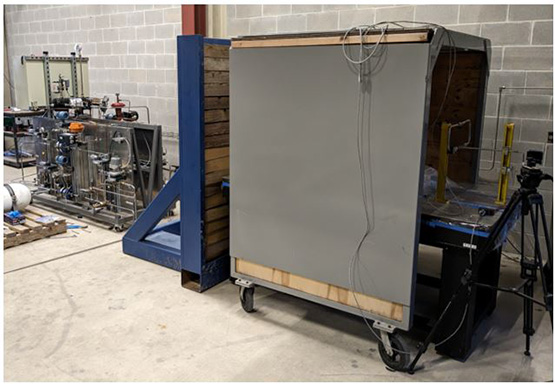Background
Supercritical carbon dioxide (sCO2) power cycles offer a potential pathway to increase the efficiency and decrease the costs of power generation. These power cycles offer efficiencies significantly higher than achievable with the incumbent steam power cycles. At the same time many of the components, especially the turbomachinery, are much smaller than a steam power cycle with comparable power output. Direct-fired sCO2 cycles also have a lower cost than natural gas combined cycle power plants with carbon capture.
Direct-fired sCO2 cycles allow for higher cycle temperature, and thus higher cycle efficiencies. This is a necessary feature of the cycles to allow for high efficiency while also capturing 100% of the produced carbon dioxide. These power cycles operate at elevated pressures not typically seen in other combustion systems, thus making experimentation more difficult. Very few experimental measurements have been conducted in direct-fired sCO2 power cycles. The lack of experimental data to support computational models is currently hampering the development of this technology. This project seeks to provide some of the necessary experimental data to promote further research and development of this exciting technology.
Approach
Computational modeling necessary to design sCO2 combustion systems currently suffers from a severe lack of validation data. While limited validation experiments in shock tubes at premixed conditions have been conducted in the last few years, no data for realistic non-premixed conditions exists in the open literature. The objectives of this project are to:
- Develop a direct-fired oxy-fuel combustor test rig for sCO2 applications.
- Use this rig to generate realistic sCO2 power generation validation data in a simplified combustor geometry.
- Validate computational fluid dynamic (CFD) simulations using the acquired experimental data.
If successful, the proposed research should advance national capabilities for the development of sCO2 power cycles for emission-free electricity generation.
Accomplishments
SwRI has completed assembly and commissioning work of the test rig (Figure 1) including flow and pressure checks of the control panel and operability of the laser ignition system. Initial atmospheric tests have been completed to demonstrate injector operability and laser ignition of a CO2-diluted oxy fuel combustor (Figure 2). Pressurized combustion testing will be conducted in the near future that will allow for data collection to use in model validation work.

Figure 1: Kilowatt-scale oxy combustor test rig.

Figure 2: Sustained oxy-fuel combustion in a CO2 diluted environment.
